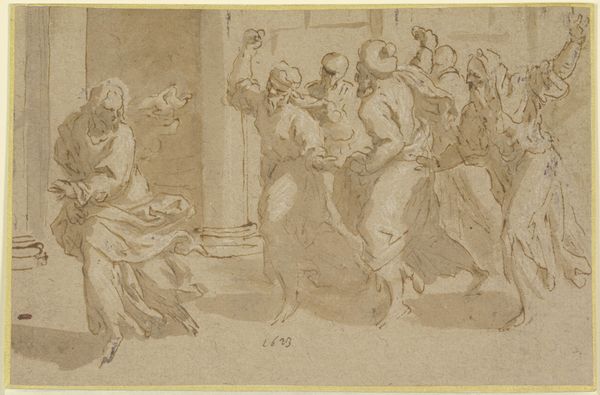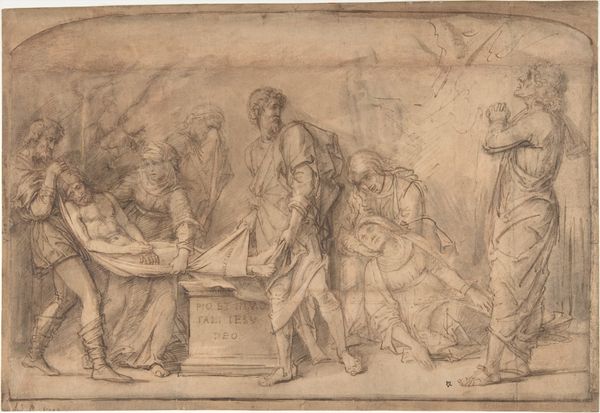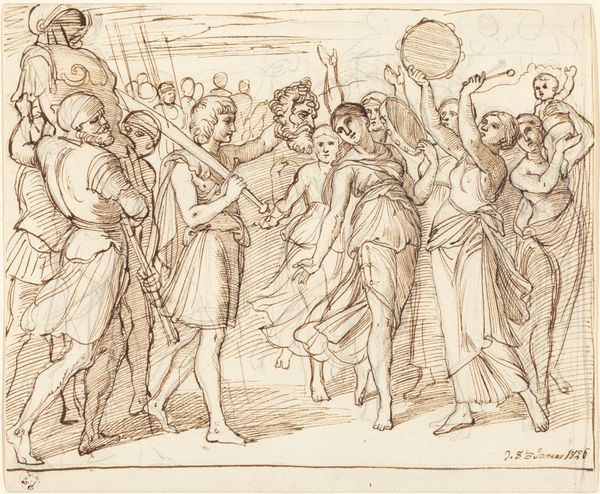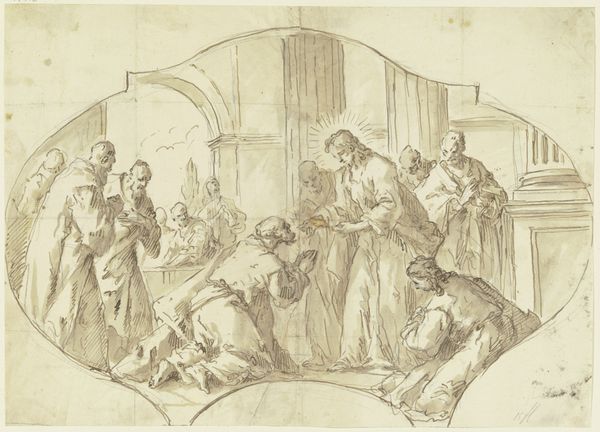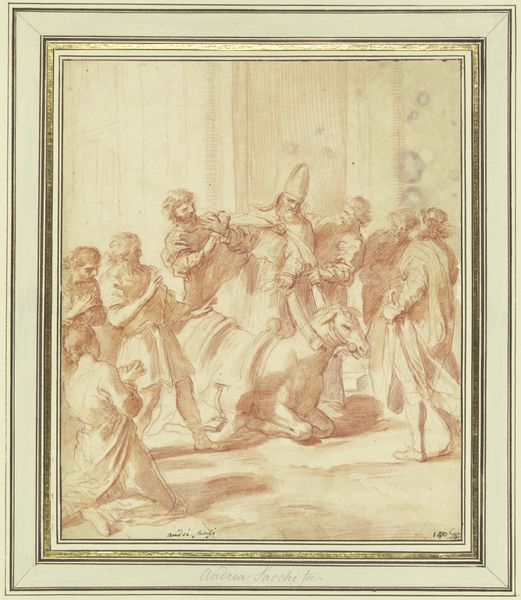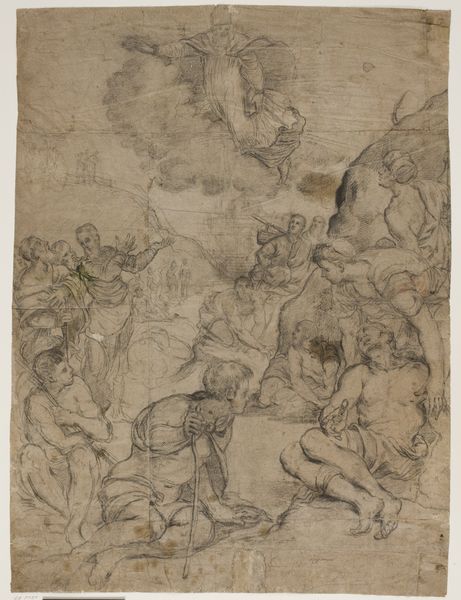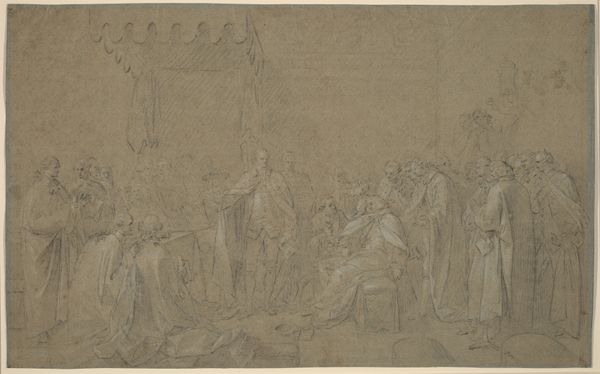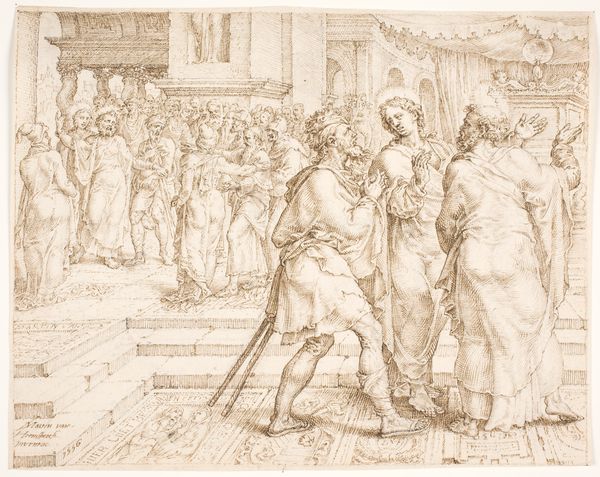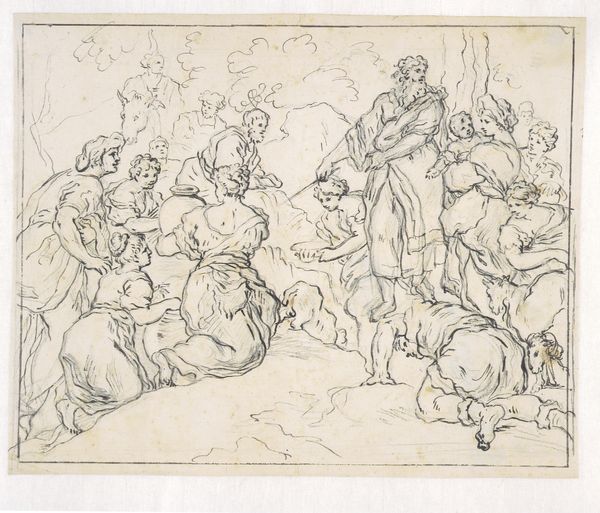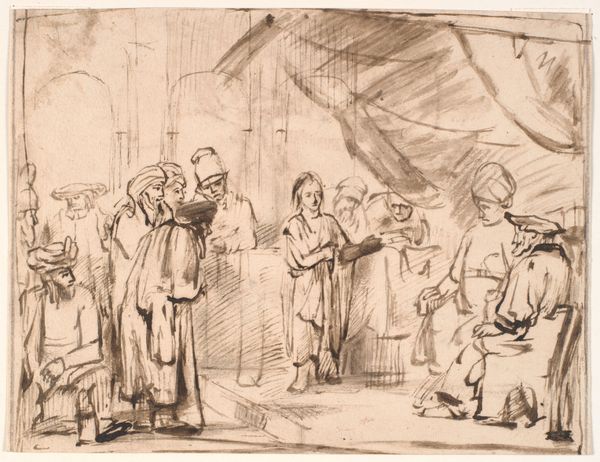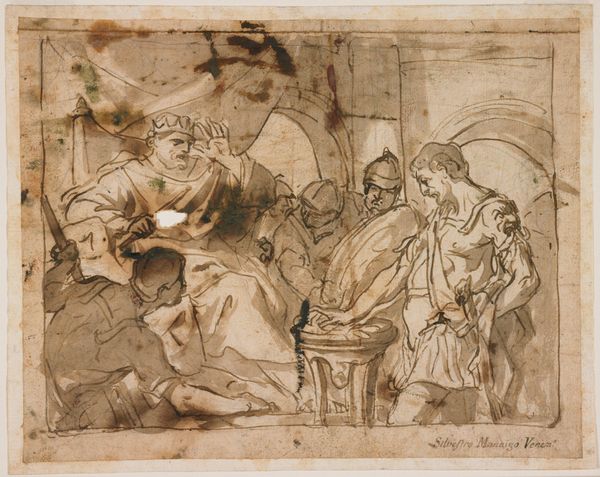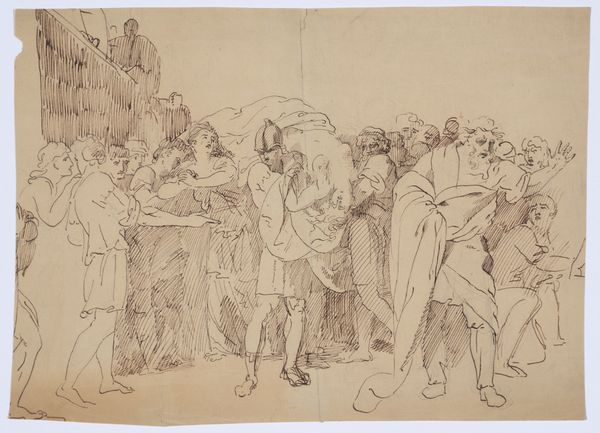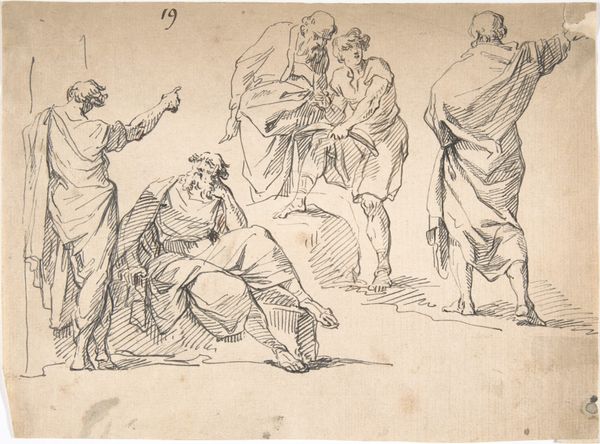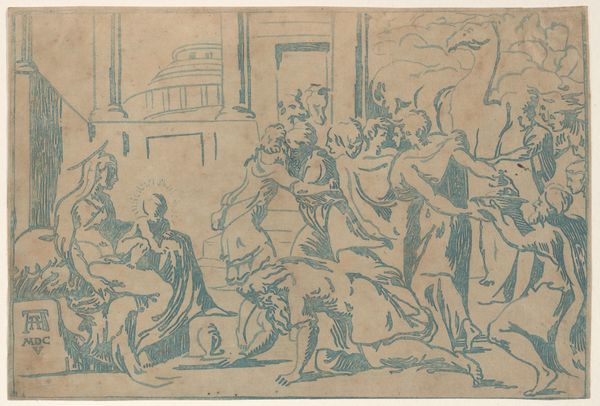
drawing, print, etching
#
drawing
#
baroque
# print
#
etching
#
figuration
#
history-painting
Dimensions: 270 × 421 mm
Copyright: Public Domain
Pierre Charles Trémolières made this etching called "The Confirmation" in the 1700s. Look closely, and you can see that this is a drawing made through a painstaking, indirect process. Trémolières would have covered a metal plate with wax, drawn into it with a sharp needle, and then bathed the plate in acid. The acid bites into the exposed metal, creating incised lines, which hold ink and transfer to paper. Etchings are often understood as a reproductive medium, a way to disseminate images widely. But even so, the character of a drawing is powerfully affected by the material it’s made in. In this case, the many tiny lines create tone and volume. Consider the sheer labor it took to create these lines, and how that process imbues the image with its serious mood. It’s a reminder that all images, even those intended for mass consumption, are rooted in specific processes and skilled handwork. Appreciating those qualities can help us break down the traditional hierarchy between the fine and decorative arts.
Comments
No comments
Be the first to comment and join the conversation on the ultimate creative platform.
